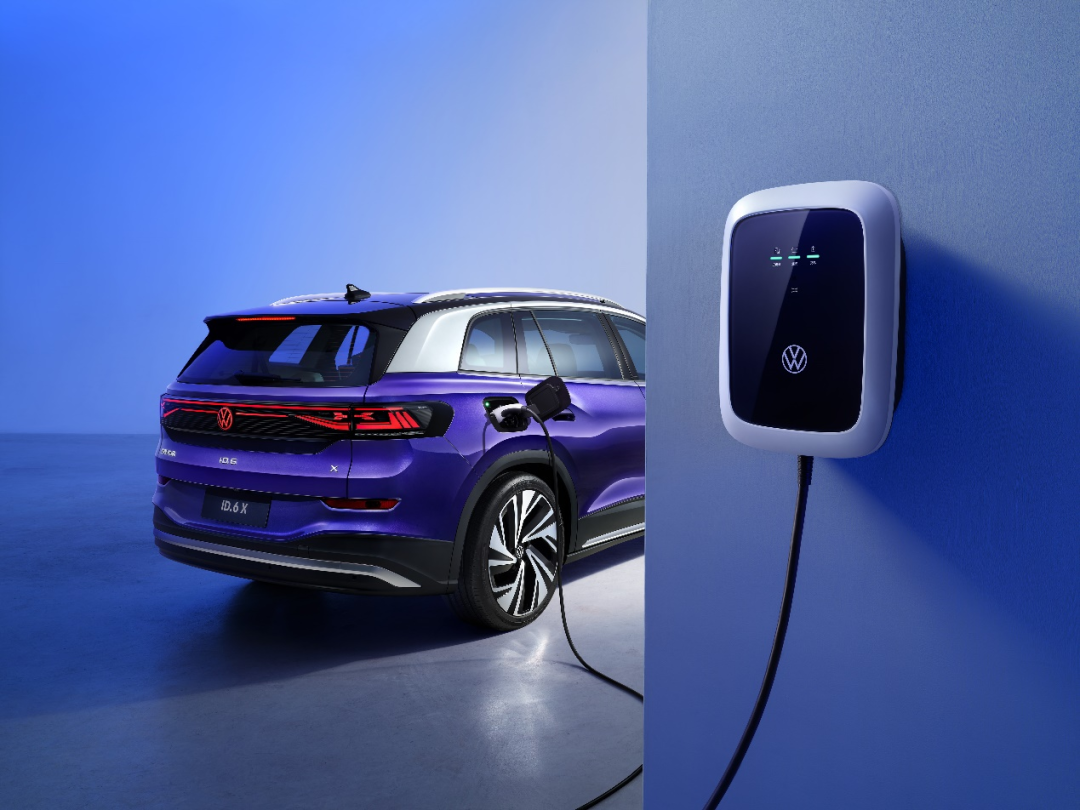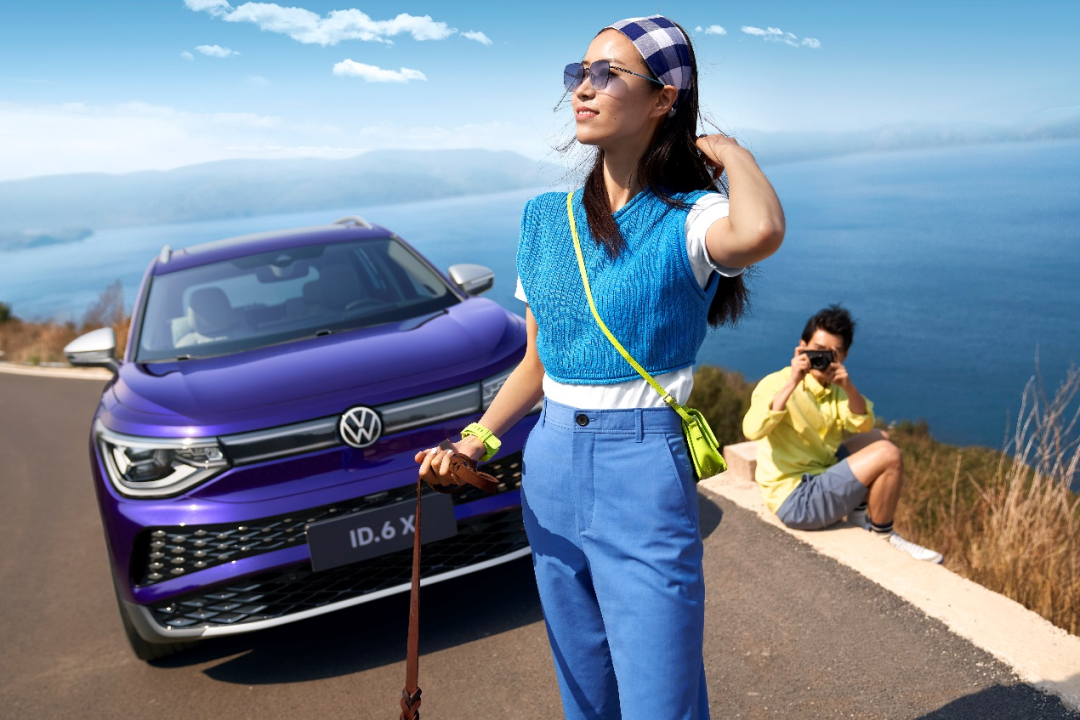*This article is reproduced from the Autocarweekly account.
There are many elements that contribute to the success of a transaction, and price occupies a considerable proportion in the decision-making process.
After watching so many press conferences targeting Gen Z’s consumption values, my heart remains calm. It’s no wonder that I don’t buy the 66 yuan Zhong Xuegao. A bobblehead toy or a saltwater popsicle can still keep you cool throughout the summer. For young people who pay for love, their rationality is frightening.
Today happens to be June 18th. E-commerce platforms have started internal competition with discounts, promotions, coupons and other incentives. Can we still have a happy time on Douyin?
However, as a senior online shopper and a level 10 master of discount hunting, yesterday, on June 17th, when SAIC Volkswagen ID.6 X live stream started, I only cared about one thing, even if you sent your boss to the space station, had a BBQ party on the edge of the sun or performed a flying heavenly goddess dance in the Mariana Trench. I only care about the price of this pure electric mid-to-large-sized SUV.
For savvy youngsters who are frequent users of short video platforms and are familiar with merchants’ promotion techniques, only the price is key to unlocking their hearts, dispelling doubts and breaking through their circle of knowledge.
Well, the ultimate official guide price range for this vehicle is 239,888 yuan to 335,888 yuan. I believe that all the concerns about the choice will be dispelled by this price.
Volkswagen has sounded the horn for a new round of value competition.
With the massive spread of fragmented information and the viral spread of various platforms with social attributes, “neijuan” has become the most frequently mentioned term among Gen Z.
Everything can be neijuan, let alone the new energy track?
Traditional energy giants want to transform and continue their glory in the era of internal combustion engines. New car-making forces entered the market and achieved great success with companies like NIO, Xpeng and IDEAL. This is compared to internet giants who made a lot of money but don’t know what to do with it. Unlike industries that can protect themselves with technical barriers, automotive people should be humble.
Of course, before we talk about product strength, even the most demanding person cannot complain about this sweeping price.
Simply put, the two dominant brands in the new energy vehicle market are Tesla Model Y, which has a manufacturer’s guide price of 347,900-377,900 yuan, and NIO ES6, which has a guide price of 358,000-526,000 yuan. SAIC Volkswagen has set the entry-level price for large-size pure electric SUVs at less than 250,000 yuan.## In terms of size, ID.6 X has a length of 4876 mm, leading Model Y with 4750 mm and NIO ES6 with 4850 mm, while the 2965 mm wheelbase is also slightly better. As a family vehicle, the layout of ID.6 X with three rows and six/seven seats is also better than that of its two competitors that sell well.
Moreover, the third row of Volkswagen ID.6 X can really accommodate passengers.

The Essence of Making Travel Better Remains Unchanged
Li Xiang once envisioned a great prospect, “By 2030, we believe that Level 4 autonomous driving will become standard equipment for every intelligent electric vehicle, and users will not buy an intelligent electric vehicle that does not have autonomous driving capabilities. Thousands of TOPS (computational power unit), tens of millions of pixel cameras and high-resolution solid-state lidars will all become standard for autonomous driving. “
But what he didn’t mention is that the Z generation now is not worried about intelligence, but range anxiety.
I don’t care if you can provide fully hands-free intelligent driving from Shanghai to Beijing. I only know that when the vehicle runs out of power, it becomes a useless machine.
Life is too short. The intelligentization and autonomous driving are foreseeable future trends. However, in at least the next three to five years, new energy vehicles are still transportation tools for solving travel from point A to point B. The greatest value of intelligence in the short term lies in how it can be applied to improving safety and making travel more comfortable.
Range and intelligence need to go hand in hand but, currently, the former has a higher priority.

ID.6 X offers two battery capacities of 63.2 kWh and 83.4 kWh, with a single motor version range of 436 km and 588 km, respectively, and a performance-focused dual-motor version of 510 km, while NIO ES6 starts at 420 km of range, and Model Y’s long-range version has a range of 594 km, but it comes with a suggested retail price of CNY 347,900, while the Volkswagen ID.6 X with a similar range only costs CNY 264,888.
Numerous examples tell us that for now, intelligence is an added feature, while range is fundamental, and the high-low relationship between it and the price is always the primary consideration for customers to buy electric vehicles.
 Perhaps Volkswagen’s models have not gone to such extremes, but looking at the whole market, there are really few opponents that can compete with it.
Perhaps Volkswagen’s models have not gone to such extremes, but looking at the whole market, there are really few opponents that can compete with it.
Those more expensive than the ID.6 have less range, while those cheaper than the ID.6 are not as spacious. In terms of a household car application, it is not as extensive as the ID.6.
This is not about using traditional car manufacturing methods to produce new energy vehicles, but rather about solving commuting issues for families more efficiently, whether it is electric or traditional fuel.
This is also the way new automotive forces think. The goal of the IDEAL ONE is to attract household users and expand coverage to an even wider range of family customers in the next five years.
After all, the meaning of a car has never changed; it is about using technology to make travel better.
Returning to the Volkswagen ID.6, with regards to several key product aspects, it has indeed set a new standard in terms of pricing for new energy travel. However, over the last 30 years, Volkswagen has been one of the most successful fuel brands globally. This has led to confusion in consumers’ minds when they are looking to buy new energy vehicles.
Given two similar products, one with a brand and the other without, consumers are more likely to choose a product with a clearer brand because the brand assures them that the product is produced with more standardized quality.
However, when it comes to new energy vehicles, consumers often have the intuition that a brand that specializes in producing new energy vehicles is better than a brand that has transitioned from fuel to electric. The huge success in the past then becomes a drag, because this concept is nearly ubiquitous among new energy forces — only we, the new automotive forces, can represent new energy vehicles.
Volkswagen is thus speeding up its investment in the new energy field while repeatedly making big moves, such as investing 17 billion to build MEB factories and planning to launch 25 MEB pure electric models in China by 2025, which is intended to enhance it’s brand image and change consumers’ perception of new energy vehicles.
This is a battlefield of public opinion. If Volkswagen has been slow to start, then all the more reason to try harder to catch up.The appearance of the suitable large-sized new energy vehicle for Generation Z is still a puzzle for Volkswagen. Nevertheless, this automaker has presented some clues with their new electric vehicle design language, which is not as radical as other Volkswagen brands in terms of style. The glowing logo, IQ. Light LED matrix intelligent headlights, and IQ. Light LED parallel flow taillights excite young people, while the contour of the car, which is not too far away from the appearance of a gasoline car, is acceptable to most people. This new energy vehicle from Volkswagen is still provided for the masses.
In the cabin, digital experience is emphasized as much as possible. They did not choose a revolutionary layout but still provide an IQ. Drive L2+ automatic driving assist system and a smart vehicle connectivity system that belonged to the future, integrating the most stable technical categories currently available in this car. They make all of these features easily operable and straightforward for drivers and passengers.
Looking beyond the surface appearance, the essence of a car has never changed, which is to facilitate the movement of passengers to their destinations efficiently. For addressing this demand, Volkswagen always stands out, regardless of the energy source they use – this only depends on their understanding of the drivers’ needs.
In conclusion, the automobile is the carrier of technology, and this has never changed. In the past, it carried out mechanical technology applications that have been extended since the Industrial Revolution. Today, it has become an intelligent terminal, which combines transportation functions and intelligent terminals, except for mobile phones. Some emerging carmakers argue that new energy vehicles are a new species, which may be called electric cars or something different, and they promote it with great enthusiasm to differentiate it from gasoline cars in the minds of consumers. However, traditional carmakers still insist on their application properties since, regardless of the changes, it remains the mode of transportation that accompanies our lives. How to embrace this new era of transportation is a question that both traditional carmakers, headed by Volkswagen, and emerging new energy forces, such as Tesla, NIO, XPeng, and Ideal, are pondering together.
This article is a translation by ChatGPT of a Chinese report from 42HOW. If you have any questions about it, please email bd@42how.com.
